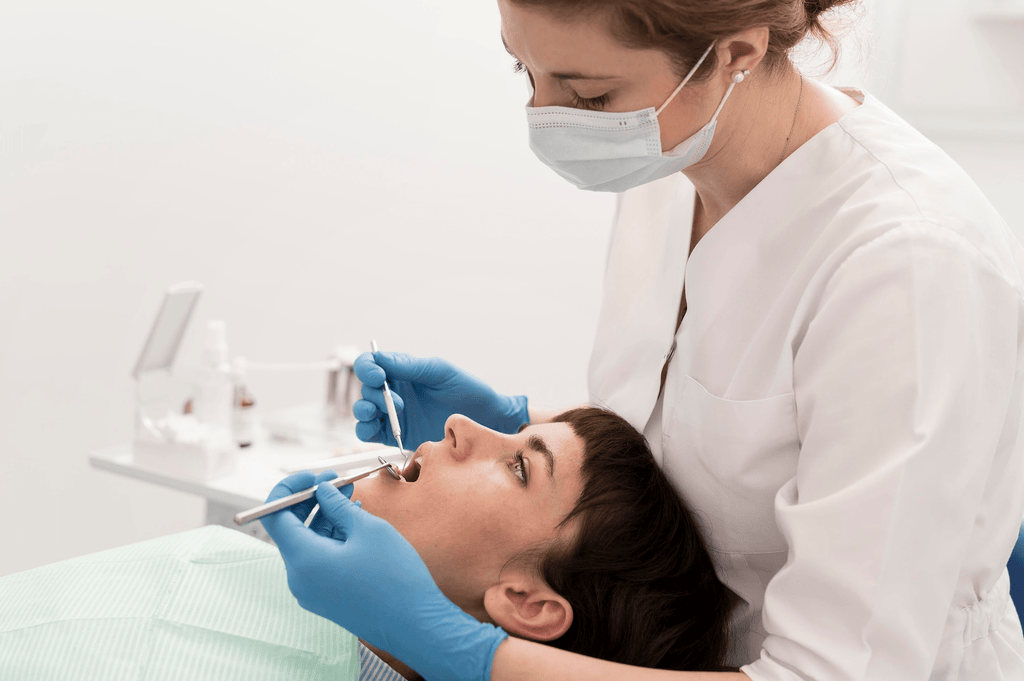
Dental Explorers Guide

Dental Explorers: Types, Uses, and a Complete Professional Guide
Have you ever wondered how dentists find tiny cavities that you can’t even see? That’s where dental explorers come in! These small but mighty tools help dentists check for tooth problems like cavities, plaque, and rough spots.
Think of a dental explorer as a detective tool for your teeth. With its thin, sharp tip, it lets dentists feel for early signs of damage, helping to keep your smile healthy.
If you're a dentist, wholesaler, or distributor, this blog will break down everything you need to know about dental explorers, their different types, how they work, and why they’re so important for oral health. Check out our full range of Dental Diagnostic Instruments available for bulk purchase.
1. What Are Dental Explorers?
A dental explorer is a small, pointed tool that dentists use to check the surface of teeth. It helps them find cavities, plaque, and rough spots that might not be visible to the naked eye. The sharp tip allows the dentist to feel for soft areas on the teeth, which might mean decay is starting.

Simple Features of a Dental Explorer:
· Sharp tip: Helps dentists feel for tooth decay.
· Thin and lightweight: Easy to hold and move inside the mouth.
· Curved or angled shape: Helps dentists reach all parts of the teeth, including tight spaces.
➡ Read our blog on Evolution of Dental Surgical Instruments.
2. Types of Dental Explorers and Their Uses
There are different types of dental explorers, and each one has a special purpose. Here’s a simple breakdown:
1. Straight Explorers
· Best for checking the smooth surfaces of teeth.
· Used in routine check-ups.
2. Curved Explorers
· Helps in finding hidden cavities and small cracks in teeth.
· Often used for detailed dental examinations.
3. Shepherd’s Hook Explorers
· The most common type used by dentists.
· Checks for cavities, plaque buildup, and weak spots on teeth.
4. Pigtail & Cowhorn Explorers
· Useful for checking tartar under the gums.
· Helps during professional deep cleaning.
5. Orban Explorers
· Used for examining deep gum pockets.
· Helps detect gum infections and diseases.
➡ Check out our Periodontal Probes to complement your dental explorers.
3. How Are Dental Explorers Used?
Dental explorers help dentists find problems in the mouth that may not be visible. Here’s how they are commonly used:
· Finding cavities early: The sharp tip helps dentists feel soft spots that could become cavities.
· Checking old fillings: Helps find loose or damaged fillings.
· Detecting plaque and tartar: Identifies areas where bacteria have built up.
· Examining the gums: Checks for gum infections or deep pockets.
You can explore our range of Dental Scalers & Curettes for plaque and tartar removal.
4. How to Choose the Right Dental Explorer
Not all dental explorers are the same. When selecting one, here are a few things to keep in mind:
1. What Is It Made Of?
· Stainless Steel: Strong, doesn’t rust, and lasts long.
· Tungsten Carbide Tips: Even stronger and stays sharp for a long time.
2. Handle Grip
· Choose one with a textured grip so it doesn’t slip from the dentist’s hand.
3. Single vs. Double-Ended Explorers
· Single-ended: Used for one specific task.
· Double-ended: Has two different tips for more flexibility.
5. How to Take Care of Dental Explorers
To make sure your dental explorers last long and work properly, follow these simple care tips:
· Wash them after each use: This removes bacteria and food particles.
· Use ultrasonic cleaners: These clean tools more deeply than regular washing.
· Sterilize in an autoclave: This kills any bacteria or viruses.
· Store in a dry place: Prevents rust and damage.
· Replace if the tip becomes dull: A sharp tip is necessary for accurate dental exams.
6. Why Dental Explorers Are Important
Dental explorers are small but powerful tools. They help dentists find dental problems early, which means they can treat issues before they get worse. This saves time, money, and pain for patients.
For dentists, clinics, wholesalers, and distributors, investing in high-quality dental explorers is essential for offering the best dental care.
📢 Browse our dental explorers Product Page and place your bulk order today!
FAQs About Dental Explorers
1. What is the main function of a dental explorer?
A dental explorer helps find cavities, plaque, and rough areas on teeth before they become serious problems.
2. How do I choose the best dental explorer?
Look for one that is made from high-quality stainless steel, has a good grip, and suits your specific needs.
3. How often should dental explorers be replaced?
If the tip becomes dull or damaged, it should be replaced to ensure accurate results.
4. Are dental explorers reusable?
Yes, but they must be properly sterilized after each use to keep them safe and hygienic.
5. Can I buy dental explorers in bulk?
Yes! We offer bulk purchase options for dentists, wholesalers, and distributors. Check our Dental Explorers Product Page for details.













